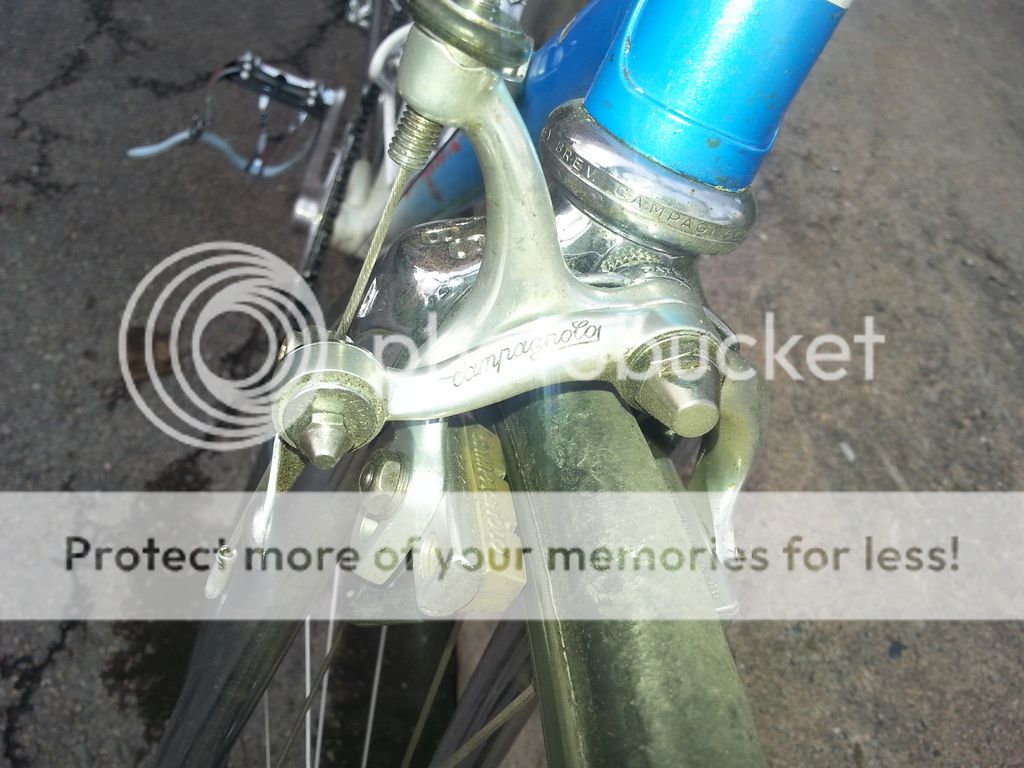Re:
If it were me:
- Check the brake spindle is straight - if the bike has been crashed, sometimes the spindle gets bent to the left where the adjuster side whips round and impacts the downtube.
Check the two nuts on the front of the brake are tight against one another and that there is no play between the two caliper arms.
Brake blocks off and check for any bits of material embedded in the brake block.
Check brake fixing bolt is fully tight and that the washers between the fork crown and the caliper are there & in one piece.
Set block heights so both blocks strike rim at the same height.
Set caliper so that both blocks hit the rim at the same time (does not necessarily mean that they will start the same distance from the rim)
Toe in as others have suggested.
Set the gap rim to block 1 - 2 mm - too close or too far and you loose efficiency as you change the mechanical advantage of the lever / caliper system.
Use a Mavic cleaning pad to clean the braking surfaces off.
That will do it and give you the best possible braking with those pads, on that rim.
Any, or any combination, of the above, barring an inefficient block to rim position, can cause squeal - it's caused by the brake biting and releasing the rim at the same frequency that will allow the rim to resonate, without the damping of both blocks being fully and evenly applied.
Toe-in allows the rim to effectively "pull" the full length of the brake block into engagement with the rim, so it increases the efficiency of the brake, as well as depressing noise.
I'd get the toe in by sanding the blocks (though in point of fact I'd use a file that is only used for this job - "sand"paper, generally actually "glass"paper, can leave bits of glass embedded in the block and if you use a file that's also used for metalwork - well, I guess the rest is obvious). If you tweak the caliper, which is common (and if carefully done, usually fairly safe) practice, you can't repeat it for a new set of blocks, whereas by removing a small amount of block material (we are talking about a full-width sliver, starting at zero thickness at the nose and no more than 1 mm deep by the extreme tail of the block), if you install new blocks and they are "out" in some other way, you can just doctor them rather than having to worry about bending the caliper again, which gets to be a progressively worse and worse idea the more times you do it.
Bear in mind, even "back in the day", pad materials and rim materials varied and sometimes it's just a bad combination - this one you should be OK with, though.

